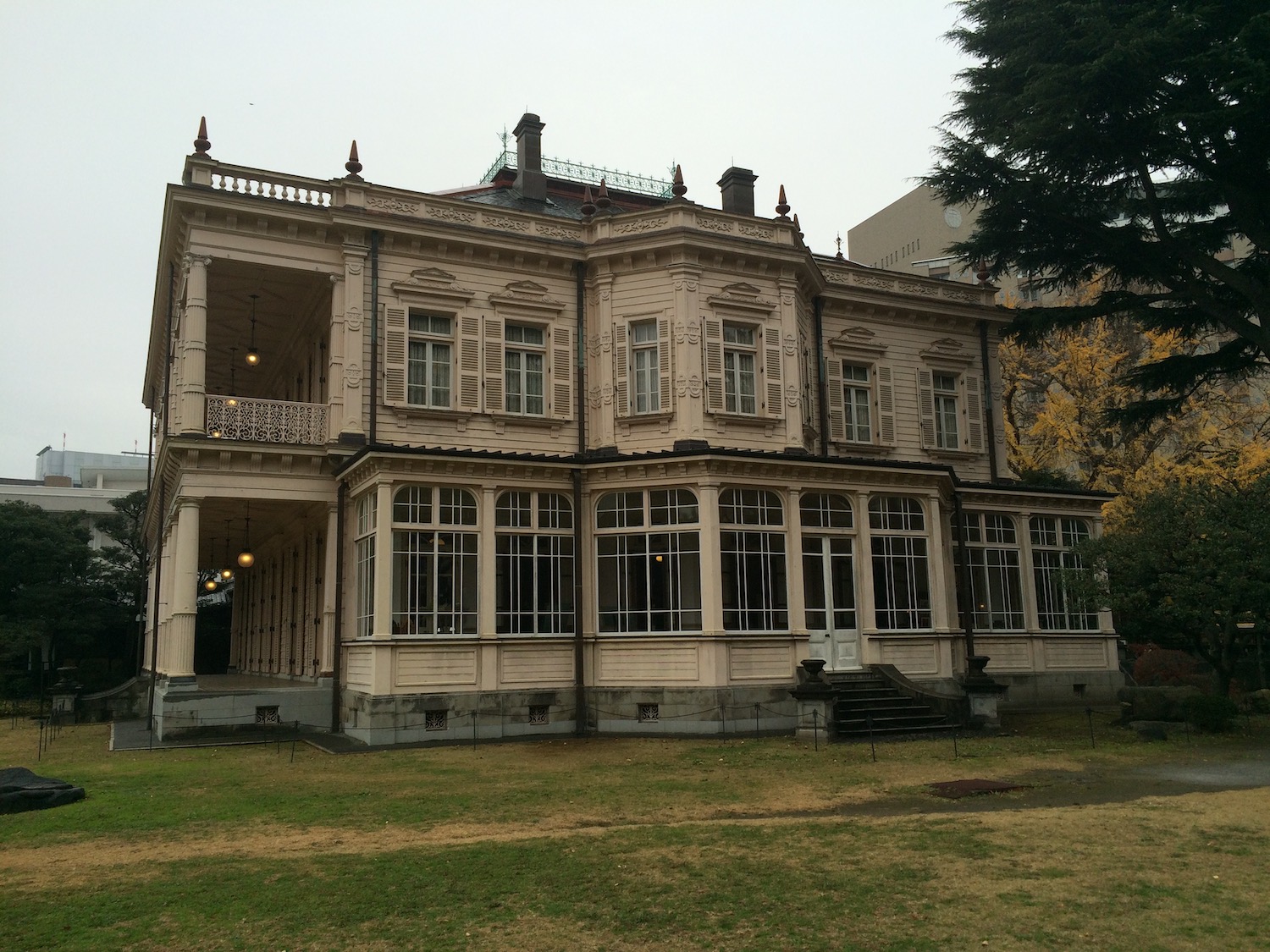Strategic bombing, the military strategy employed in total war with the goal of defeating the enemy by destroying its morale or its economic ability to produce and transport materiel, was used with a vengeance in the Pacific War. Sixty-six major cities in Japan had been bombed, “destroying 40 percent of these urban areas overall and rendering around 30 percent of their populations homeless,” writes John Dower in his Pulitzer Prize-winning Embracing Defeat. “In Tokyo, the largest metropolis, 65 percent of all residences were destroyed . . . The first American contingents to arrive in Japan . . . were invariably impressed, if not shocked, by the mile after mile of urban devastation . . . Russell Brines, the first foreign journalist to enter Tokyo, recorded that ‘everything had been flattened . . . Only thumbs stood up from the flatlands—chimneys of bathhouses, heavy house safes and an occasional stout building with heavy iron shutters.’” (Dower: 1999, pp. 45-46.)
Meiji Gakuin’s Memorial Hall (明治学院記念館) was built in 1890.
Having known of the extensive damage to Tokyo, it always perplexed me that certain buildings like those pictured here managed to remain, ostensibly unscathed by the bombings. Check out a satellite view of Tōkyō on GoogleMap and you’ll find many of these houses hidden like Fabergé Easter eggs in the urban sprawl of the metropolis.
As I was re-reading Dower’s masterpiece on Japan in the wake of WWII, I learned that it was no coincidence that these mansions were spared:
“Even amid such extensive vistas of destruction, however, the conquerors found strange evidence of the selectiveness of their bombing policies. Vast areas of poor people’s residences, small shops, and factories in the capital were gutted, for instance, but a good number of the homes of the wealthy in fashionable neighborhoods survived to house the occupation’s officer corps. Tokyo’s financial district, largely undamaged would soon become “little America,” home to MacArhur’s General Headquarters (GHC). Undamaged also was the building that housed much of the imperial military bureaucracy at war’s end. With a nice sense of irony, the victors subsequently appropriated this for their war crimes trials of top leaders.” (Dower: 1999, pp. 46-47.)
The former residence of Iwasaki Hisaya, an industrialist from the Meiji to Show periods (i.e. Mitsubishi Corporation), was constructed in 1896. It is located in Ikenohatai. (旧岩崎邸庭園)
Former residence of the Maeda family, built in 1929-30. Maeda was the 16th head of the Kaga Domain (present-day Ishikawa and Toyama prefectures). The Maeda rose to prominence as daimyō under the Tokugawa Shogunate and were second only to the Tokugawa Clan in regards to land value.
I have more photos of these buildings and houses which I will upload later.






